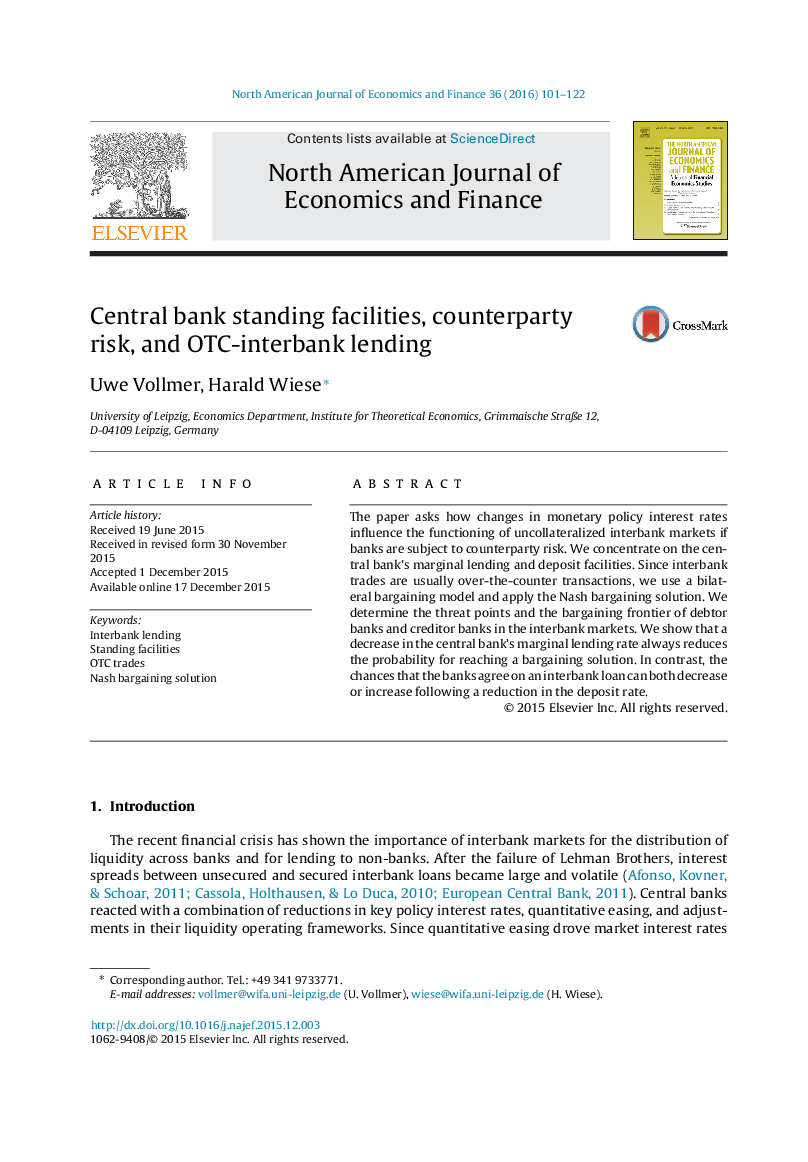| Article ID | Journal | Published Year | Pages | File Type |
|---|---|---|---|---|
| 973076 | The North American Journal of Economics and Finance | 2016 | 22 Pages |
The paper asks how changes in monetary policy interest rates influence the functioning of uncollateralized interbank markets if banks are subject to counterparty risk. We concentrate on the central bank's marginal lending and deposit facilities. Since interbank trades are usually over-the-counter transactions, we use a bilateral bargaining model and apply the Nash bargaining solution. We determine the threat points and the bargaining frontier of debtor banks and creditor banks in the interbank markets. We show that a decrease in the central bank's marginal lending rate always reduces the probability for reaching a bargaining solution. In contrast, the chances that the banks agree on an interbank loan can both decrease or increase following a reduction in the deposit rate.
